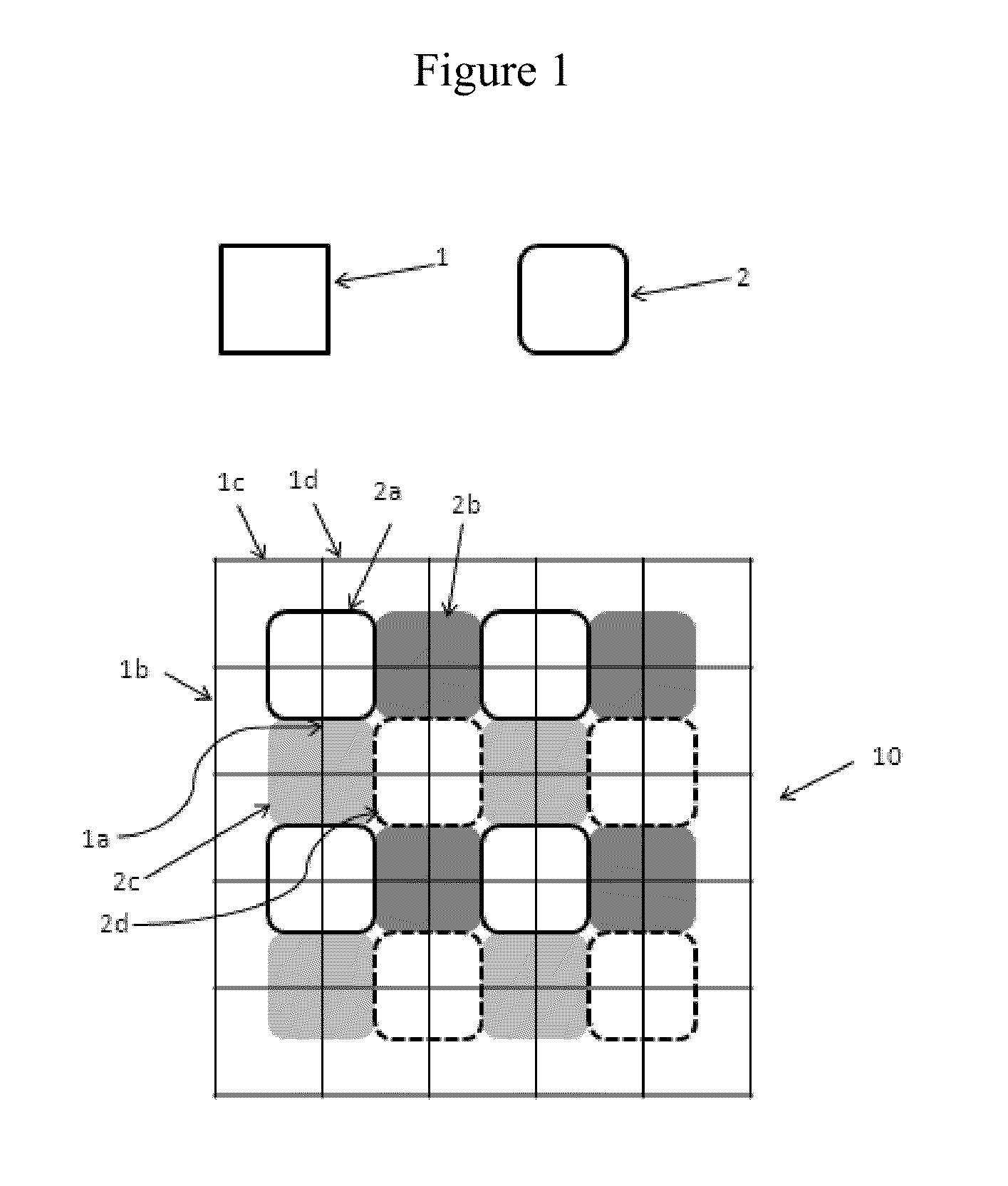Super resolution imaging
a super-resolution imaging and imaging technology, applied in the field of biological or chemical analysis, can solve the problems of reducing the accuracy of these analyses, increasing the cost of resolution limits, and requiring a relatively large bench-top footprin
- Summary
- Abstract
- Description
- Claims
- Application Information
AI Technical Summary
Benefits of technology
Problems solved by technology
Method used
Image
Examples
example i
Fluorescence Quenching Using Direct Electrode Energy Transfer
[0093]This example shows that selectively applying an electric field at an electrically responsive pad can quench fluorescent labels or moieties at the pad. To achieve super resolution imaging, a switch can be used to alternately apply electric field at two pads that are in the detection zone of a single pixel. Application of the field can quench fluorescence, for example, via energy transfer between a dipole emitter (e.g. a fluorophore) and a metallic surface. A fluorescently labeled nucleic acid molecule is particularly useful due to the flexibility in the molecule which allows the fluorophore to be pulled closer to the surface (by the field) where quenching is greatest. Other flexible target analytes or those having flexible linkers can be used similarly. Nucleic acids or other fluorescently labeled target analytes can be attached to a surface and surface quenching can be carried out, for example, as described in Rant e...
example ii
Fluorescence Quenching Using Energy Transfer to Electrically Conductive Polymers
[0096]This example shows that applying an electric field at an electrically responsive pad that contains electrically conductive polymers in a gel can quench fluorescent labels or moieties that are in the gel.
[0097]Transparent conductive polymers, such as poly(3,4-ethylenedioxythiophene)poly(styrenesulfonate) (PEDOT:PSS), polyacetylenes or polyphenylenes, can be embedded in a gel, such as SFA, during the polymerization process. The gel-polymer mix can be polymerized on the responsive pads to provide a porous electrode using conditions previously described for polymerization of SFA (see, US Pat. App. Pub. No. 2011 / 0059865 A1, which is incorporated herein by reference). A target analyte such as fluorescently labeled nucleic acid can be embedded in the gel. For example, DNA clusters can be grown in the gel-polymer matrix using methods set forth previously herein. Application of an electric field can quench ...
example iii
Fluorescence Intensity Modulation with Voltage Sensitive Dyes
[0099]This example shows applying an electric field at an electrically responsive pad that contains a target analyte (e.g. a nucleic acid) labeled with a voltage sensitive dye. Applying an electric field can modulate signal from the dye.
[0100]An electrically responsive pad is coated with SFA that is grafted to P5 and P7 primers as described in Example I. The P5 / P7 primers are hybridized with complementary primers labeled with voltage sensitive dyes such as di-8-ANEPPS (Life Technologies, Carlsbad, Calif.), or ANNINE-6plus (Fromherz et al., Eur. Biophys. J. 37: 509-514 (2008)). Application of an electric field to the pad results in increased fluorescence intensity at the pad. Using voltage sensitive dyes, the fluorescence intensity of nucleic acid features clusters can be directly modulated by applying an electric field.
PUM
| Property | Measurement | Unit |
|---|---|---|
| Concentration | aaaaa | aaaaa |
| Electric field | aaaaa | aaaaa |
Abstract
Description
Claims
Application Information
 Login to View More
Login to View More - R&D
- Intellectual Property
- Life Sciences
- Materials
- Tech Scout
- Unparalleled Data Quality
- Higher Quality Content
- 60% Fewer Hallucinations
Browse by: Latest US Patents, China's latest patents, Technical Efficacy Thesaurus, Application Domain, Technology Topic, Popular Technical Reports.
© 2025 PatSnap. All rights reserved.Legal|Privacy policy|Modern Slavery Act Transparency Statement|Sitemap|About US| Contact US: help@patsnap.com



